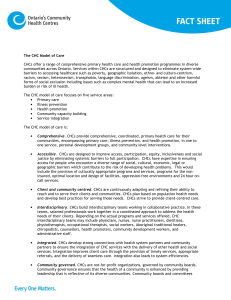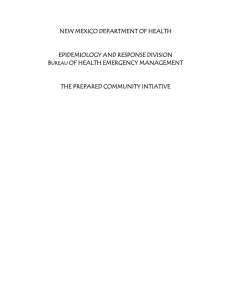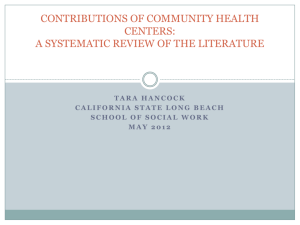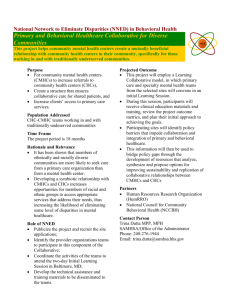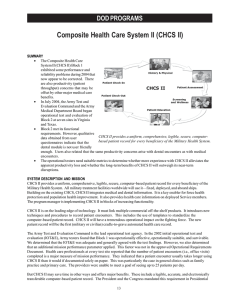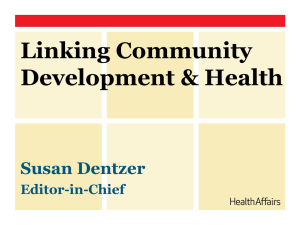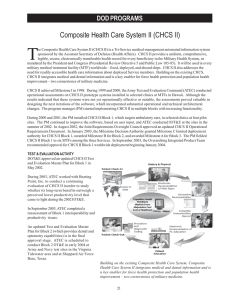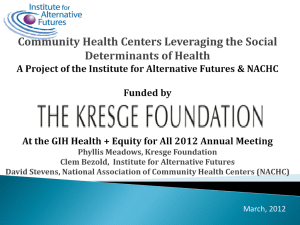(March 6.2012) A new study that compares the performance of
advertisement
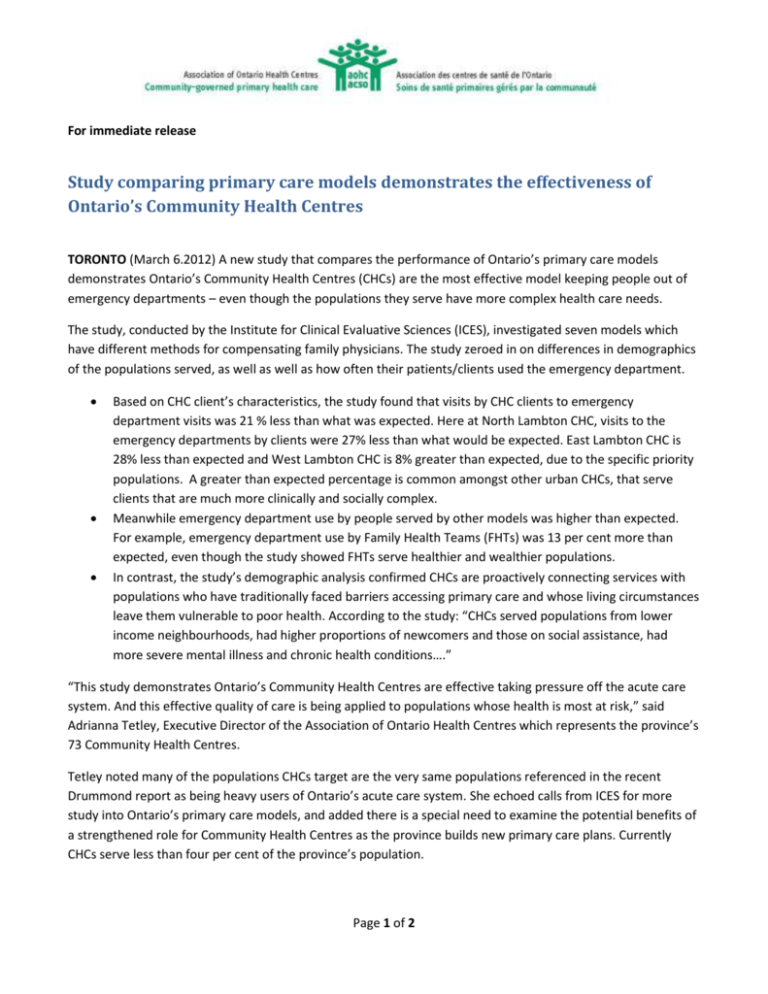
For immediate release Study comparing primary care models demonstrates the effectiveness of Ontario’s Community Health Centres TORONTO (March 6.2012) A new study that compares the performance of Ontario’s primary care models demonstrates Ontario’s Community Health Centres (CHCs) are the most effective model keeping people out of emergency departments – even though the populations they serve have more complex health care needs. The study, conducted by the Institute for Clinical Evaluative Sciences (ICES), investigated seven models which have different methods for compensating family physicians. The study zeroed in on differences in demographics of the populations served, as well as well as how often their patients/clients used the emergency department. Based on CHC client’s characteristics, the study found that visits by CHC clients to emergency department visits was 21 % less than what was expected. Here at North Lambton CHC, visits to the emergency departments by clients were 27% less than what would be expected. East Lambton CHC is 28% less than expected and West Lambton CHC is 8% greater than expected, due to the specific priority populations. A greater than expected percentage is common amongst other urban CHCs, that serve clients that are much more clinically and socially complex. Meanwhile emergency department use by people served by other models was higher than expected. For example, emergency department use by Family Health Teams (FHTs) was 13 per cent more than expected, even though the study showed FHTs serve healthier and wealthier populations. In contrast, the study’s demographic analysis confirmed CHCs are proactively connecting services with populations who have traditionally faced barriers accessing primary care and whose living circumstances leave them vulnerable to poor health. According to the study: “CHCs served populations from lower income neighbourhoods, had higher proportions of newcomers and those on social assistance, had more severe mental illness and chronic health conditions….” “This study demonstrates Ontario’s Community Health Centres are effective taking pressure off the acute care system. And this effective quality of care is being applied to populations whose health is most at risk,” said Adrianna Tetley, Executive Director of the Association of Ontario Health Centres which represents the province’s 73 Community Health Centres. Tetley noted many of the populations CHCs target are the very same populations referenced in the recent Drummond report as being heavy users of Ontario’s acute care system. She echoed calls from ICES for more study into Ontario’s primary care models, and added there is a special need to examine the potential benefits of a strengthened role for Community Health Centres as the province builds new primary care plans. Currently CHCs serve less than four per cent of the province’s population. Page 1 of 2 “Primary care is the foundation of our entire health care system so it’s very important to get the right mix of primary care models,” said Tetley. “What this research seems to suggest is that health of individuals, families and entire communities will significantly benefit if Ontario’s Community Health Centres play a strengthened role in the province’s primary care planning.” CHCs’ comprehensive services and their focus addressing the social determinants of health are two potential reasons for CHCs strong results in the study. Along with the province’s 10 Aboriginal Health Access Centres, they combine primary care with a wide range of counseling, health promotion and community development services. Here in Sarnia Lambton programs such as our Diabetes Education, Chronic Obstructive Pulmonary Disease Program and our Health Promotion Programs (i.e. smoking cessation, exercise and cooking programs) are especially designed to improve the health of people, in poor health and keep them out of hospital. And in addition to physicians and nurses, CHCs ‘ interprofessional teams include dietitians, therapists, social workers, health promoters, chiropodists and many other types of health providers. In contrast to other primary care models, all members of the team, including physicians, are on salary. Quick facts: A total of 73 CHCs serve approximately 357,000 people in 110 communities throughout Ontario. Not all the new CHCs announced in 2004 and 2005 are fully operational. When they are, a total of 440,000 people will receive benefit form CHC programs and services. Here in the Erie St. Clair LHIN, CHCs serve 17,218 people. CHCs are proactive directing services to those whose health is most at risk and are focused on lessening avoidable visits to hospital emergency departments. According to the most recent figures supplied by the Canadian Institute for Health Information, in 2005 the average visit to an emergency department in Ontario cost $148. The cost today is likely closer to $180. Other studies have confirmed CHC effectiveness. According to recent research conducted by the Élisabeth Bruyère Institute, compared to other models, CHCs deliver superior health promotion services and chronic disease prevention and management. They also do a better job orienting services to community needs. Governed by community members, CHCs give people a voice and a choice about the health services they receive. CHCs are also key connectors: interprofessional health team’s partner with other health and social service agencies. CHCs are key contributors to the sustainability of our healthcare system. By creating community-based hubs where a wide range of services are integrated under one roof, they provide excellent value for money. The average capital cost to build one CHC as a hub with several services under one roof is $6M. To build over 100 hubs across the province would cost much less than cost of construction for one hospital. The ICES study can be found at: http://www.ices.on.ca/webpage.cfm?site_id=1&org_id=68 Contact: Mary MacNutt – marym@aohc.org or 647-992-2642 www.aohc.org and www.ontariochc.ca Page 2 of 2
